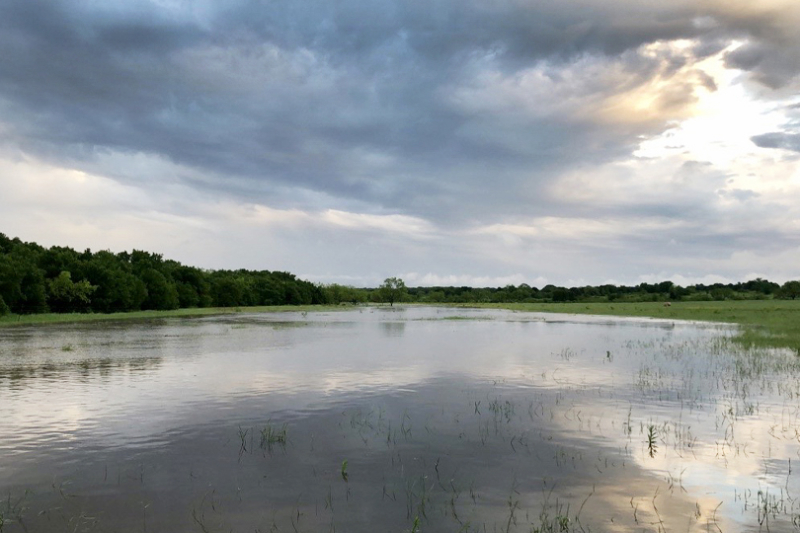By Emmy Powell
Communications Specialist
The Texas Water Development Board (TWDB) recently approved the first statewide flood plan that provides a comprehensive assessment of flood risk and solutions to mitigate that risk.
The flood plan includes findings from 15 regional flood plains, along with legislative and floodplain management recommendations, to guide state, regional and local flood control policy to reduce the risk and impact of flooding.
“Adopting the first-ever state flood plan is a monumental achievement for Texas,” TWDB Chairwoman Brooke Paup said. “It would not have been possible without the collaboration and dedication of everyone who touched this extensive effort, including the 15 regional flood planning groups and their volunteer members, sponsors, technical consultants, other stakeholders, fellow state agencies and TWDB staff.”
About 5.2 million people, or one in every six people in Texas, lives or works in known flood hazard areas, according to the plan. More than 1.6 million buildings are at risk, including nearly 6,300 critical buildings such as hospitals, schools and fire stations.
Each of the 15 regions may experience varying levels of flooding due to several factors.
“The extent and type of flood hazards vary due to many differences in the state of Texas, such as population, land development, topography, rainfall patterns and the proximity to rivers and the coastline,” L’Oreal Stepney, TWDB board member, said. “But when we started this process here at the Texas Water Development Board, not all parts of Texas had flood hazard information.”
TWDB identified about 4,600 flood risk reduction solutions with the help of the planning groups.
“One of the greatest successes of this first cycle of regional and state flood planning is that we now have some level of flood hazard information for the entire state,” Stepney said. “That is a tremendous accomplishment and an essential foundation for not only understanding flood risk but also working to mitigate it to keep people and property safe.”
The total estimated implementation cost is more than $54.5 billion. According to the planning groups, an estimated 843,339 people and 214,292 buildings would be removed from the 1% annual chance (100-year) floodplain if the plan is implemented.
The 285-page document includes plans to construct ditches, storm sewers, detention ponds, levees and “nature-based solutions” that use and curate the environment to hold and control water.
Despite the last few years of drought, it is important for the state to prepare for any natural disaster, including flooding.
“Unfortunately, flooding is a harsh reality in many parts of the state,” said Jay Bragg, Texas Farm Bureau associate director of Commodity and Regulatory Activities. “Effective planning can help minimize the loss of life and property. The state flood plan compiled strategies identified by regional flood planning groups. Texas Farm Bureau worked to ensure that farmers and ranchers were represented in this planning process.”
An updated flood plan will be created every five years based on the flood planning groups’ regional plans.
Efforts to create the state flood plan began with the state legislature’s approval of SB 8 in 2019. Now, TWDB will need to submit the document to the governor, lieutenant governor and the Texas Legislature by September and then request the funds from state lawmakers.
The 2024 State Flood Plan is available on the TWDB website.
An interactive viewer is also available and displays and summarizes the data generated by the TWDB state flood planning process, including existing infrastructure, flood hazard areas and exposure, critical and other infrastructure at risk, recommended flood risk evaluations, flood mitigation project recommendations and more.


Leave A Comment